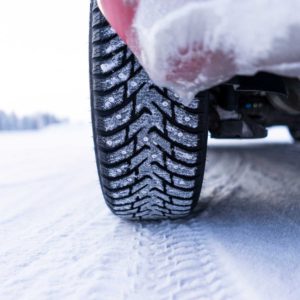 No one enjoys tire shopping. It’s a big cost with very little excitement factor. However, choosing a good tire can improve your driving, safety and overall make the car perform better. Buying tires can be confusing and time consuming.
No one enjoys tire shopping. It’s a big cost with very little excitement factor. However, choosing a good tire can improve your driving, safety and overall make the car perform better. Buying tires can be confusing and time consuming.
If you need to buy tires read on. I’ve done my best to help save you time and money when buying tires.
1) How to Tell if You Need New Tires
Is the Tread Too Low?
There is an easy low tech measurement that can tell you right away if you need new tires.
Place a penny with Abraham Lincoln’s head down towards the tire, in the most worn part of your tire. If you see the top of the head, it’s time to consider buying tires.
It’s cheaper to replace tires when you have time to shop for them. If you wait too long and buy when you have an emergency, it will likely cost you more.
Are Your Tires Too Old?
Tires aren’t thought of as an item that wears out from age, but they do. After about 10 years, your tires should be replaced regardless of the tread left. After 5 or 6 years, you may want to have them looked at. If you see cracking on the sidewalls, have them checked immediately.
2) Choose the Right Tire Type
There is a lot to choosing the type of tire to best meet your need. You need to think about several items. How do you drive? What’s the weather like where you drive? What surface do you drive on? Do you have large loads in the vehicle? What is the cars minimum requirements?
Most auto manufacturers put a lot of time and money into choosing the best type of tire for your car. However, you may want to change the performance to adapt more to the way you drive. If you are using the car as it was intended to use, the decision is easy, and you should stay in the same or similar type of tire the manufacturer recommends.
Summer Tires
If you drive a standard passenger vehicle in a climate that doesn’t typically drop below 45°F for the majority of the year, then summer tires are ideal for you. Summer tires perform well in both wet and dry conditions. However, that’s a gradual rain, not heavy weather. In that case you’d want an all-season tire.
Winter Tires, or Snow Tires
If you live in a climate where the temperature regularly drops below 45°For in an area with a lot of snow, then a set of winter/snow tires might be ideal for you.. Snow tires are specifically designed to work in bad weather conditions, giving you the traction, grip that summer tires aren’t built to give.
All-Season Tires
All-season does not mean they are perfect tires for all seasons. It means they can handle hot and cold, but they are built to compromise. You will not get the maximum traction and performance at all times with the all-season tire. You are just finding a happy middle ground. If you live in an area that has weather swings, but not too extreme, these are likely the best choice.
If you are towing heavy loads, driving in variable weather, racing etc. You’ll need to spend more time getting the right tire.
Getting the Right Size
Review your owner’s manual or the sticker on the door jamb, behind the driver’s door, to find the appropriate size and specifications for your vehicle.
If you change the size of the tire, you will change the reading on your speedometer. You may also change the demand put on other components like the transmission.

[…] tires on their different models. None of these tires are considered a true winter tire. The all-season tire is the closest thing you will find to a snow rated tire. The all-season is considered by many […]